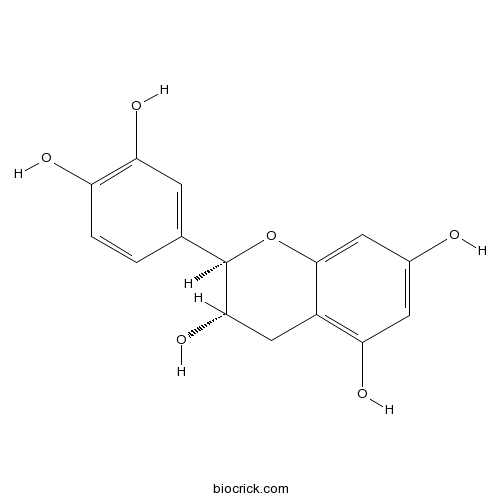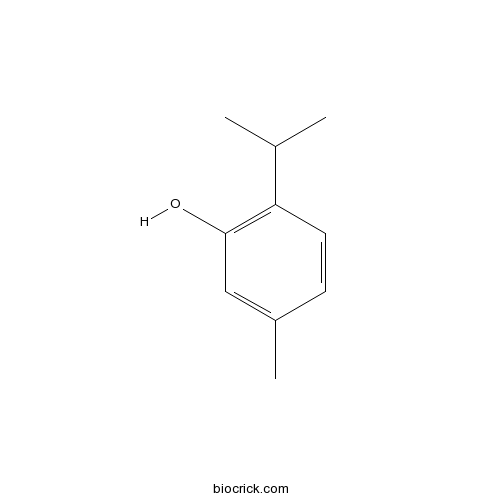Elsholtzia ciliata
Elsholtzia ciliata
1. The products in our compound library are selected from thousands of unique natural products; 2. It has the characteristics of diverse structure, diverse sources and wide coverage of activities; 3. Provide information on the activity of products from major journals, patents and research reports around the world, providing theoretical direction and research basis for further research and screening; 4. Free combination according to the type, source, target and disease of natural product; 5. The compound powder is placed in a covered tube and then discharged into a 10 x 10 cryostat; 6. Transport in ice pack or dry ice pack. Please store it at -20 °C as soon as possible after receiving the product, and use it as soon as possible after opening.
Natural products/compounds from Elsholtzia ciliata
- Cat.No. Product Name CAS Number COA
-
BCN1688
Catechin154-23-4
Instructions

-
BCN3794
Thymol89-83-8
Instructions

Structure determination and quantification of a new flavone glycoside with anti-acetylcholinesterase activity from the herbs of Elsholtzia ciliata.[Pubmed: 29224362]
None
New chromosome reports in Lamiaceae of Kashmir (Northwest Himalaya), India.[Pubmed: 27525411]
Meiotic studies and chromosome data are imperative in order to have an overall germplasm evaluation of a taxon. In the present effort, the meiotic study is carried out in 48 populations belonging to 26 species of Lamiaceae collected from their natural habitats in Kashmir Himalaya, which forms an important part of Northwest Himalaya. Chromosome counts in the five species viz. Dracocephalum nutans (2n = 10), Lycopus europaeus (2n = 22), Marrubium vulgare (2n = 54), Nepeta nervosa (2n = 18) and Salvia sclarea (2n = 22) are first time reported from India. Besides, 17 species are cytologically evaluated for the first time from the study area-Kashmir Himalaya. In Marrubium vulgare, hexaploid cytotype (2n = 6 × =54) is reported for the first time. Also, diploid and tetraploid cytomorphovariants are observed in Calamintha vulgaris (2n = 20, 40), Elsholtzia ciliata (2n = 16, 32) and Mentha longifolia (2n = 20, 40). Various meiotic abnormalities like chromatin stickiness, cytomixis, nonsynchronous disjunction, laggards, chromatin bridges, etc. leading to pollen abnormalities have been documented for the first time in some species. The worldwide status of chromosome number data in each genus is presented.
Elsholtzia ciliata (Thunb.) Hylander attenuates renal inflammation and interstitial fibrosis via regulation of TGF-ß and Smad3 expression on unilateral ureteral obstruction rat model.[Pubmed: 27002403]
Renal interstitial fibrosis is characterized by excessive accumulation of extracellular matrix, which leads to end-stage renal failure.
Essential Oils from the Medicinal Herbs Upregulate Dopamine Transporter in Rat Pheochromocytoma Cells.[Pubmed: 26295793]
The dopamine transporter (DAT) protein, a component of the dopamine system, undergoes adaptive neurobiological changes from drug abuse. Prevention of relapse and reduction of withdrawal symptoms are still the major limitations in the current pharmacological treatments of drug addiction. The present study aimed to investigate the effects of essential oils extracted from Elsholtzia ciliata, Shinchim, Angelicae gigantis Radix, and Eugenia caryophyllata, well-known traditional Korean medicines for addiction, on the modulation of dopamine system in amphetamine-treated cells and to explore the possible mechanism underlying its therapeutic effect. The potential cytotoxic effect of essential oils was evaluated in PC12 rat pheochromocytoma cells using cell viability assays. Quantification of DAT, p-CREB, p-MAPK, and p-Akt was done by immunoblotting. DAT was significantly reduced in cells treated with 50 μM of amphetamine in a time-dependent manner. No significant toxicity of essential oils from Elsholtzia ciliata and Shinchim was observed at doses of 10, 25, and 50 μg/mL. However, essential oils from A. gigantis Radix at a dose of 100 μg/mL and E. caryophyllata at doses of 50 and 100 μg/mL showed cytotoxicity. Treatment with GBR 12909, a highly selective DAT inhibitor, significantly increased DAT expression compared with that of amphetamine only by enhancing phosphorylation of mitogen-activated protein kinases (MAPK) and Akt. In addition, essential oils effectively induced hyperphosphorylation of cyclic-AMP response element-binding protein (CREB), MAPK, and Akt, which resulted in DAT upregulation. Our study implies that the essential oils may rehabilitate brain dopamine function through increased DAT availability in abstinent former drug users.
Evaluation of antioxidant activities of aqueous extracts and fractionation of different parts of Elsholtzia ciliata.[Pubmed: 22572928]
The aim of this study was to investigate the antioxidant and free-radical scavenging activity of extract and fractions from various parts of Elsholtzia ciliata. The inflorescences, leaves, stems and roots of E. ciliata were extracted separately and two phenolic component enrichment methods: ethyl acetate-water liquid-liquid extraction and macroporous resin adsorption-desorption, were adopted in this study. The antioxidant activities of water extracts and fractions of E. ciliata were examined using different assay model systems in vitro. The fraction root E (purified by HPD300 macroporous resin) exhibited the highest total phenolics content (497.2 ± 24.9 mg GAE/g), accompanied with the highest antioxidant activity against various antioxidant systems in vitro compared to other fractions. On the basis of the results obtained, E. ciliata extracts can be used potentially as a ready accessible and valuable bioactive source of natural antioxidants.
Elsholtzia ciliata inhibits mast cell-mediated allergic inflammation: role of calcium, p38 mitogen-activated protein kinase and nuclear factor-{kappa}B.[Pubmed: 21807818]
Mast cell-mediated allergic reaction is involved in many diseases such as asthma and allergic rhinitis. Therefore, discovery of drugs for the prevention or treatment of allergic disease is an important topic in human health. In this study, we evaluated the effects of water extract of Elsholtzia ciliata (Thunb.) Hyland (Labiatae) (WEEC) on mast cell-mediated allergic inflammation and studied the possible mechanisms of action. WEEC inhibited compound 48/80-induced systemic and immunoglobulin E-mediated local anaphylaxis, and serum histamine release in mice. WEEC reduced intracellular calcium levels and downstream histamine release from human mast cells (HMC-1) activated with phorbol 12-myristate 13-acetate and calcium ionophore A23187. In addition, WEEC decreased gene expression and secretion of proinflammatory cytokines such as tumor necrosis factor-α, interleukin (IL)-1β and IL-6 in HMC-1. The inhibitory effect of WEEC on cytokine expression was nuclear factor (NF)-κB and p38 mitogen-activated protein kinase (MAPK) dependent. Our results indicate that WEEC inhibits mast cell-mediated allergic inflammatory reactions by suppressing histamine release and proinflammatory cytokine expression, and involvement of calcium, NF-κB and p38 MAPK in these effects.
Honeybee (Apis cerana) foraging responses to the toxic honey of Tripterygium hypoglaucum (Celastraceae): changing threshold of nectar acceptability.[Pubmed: 18058178]
To investigate honeybee foraging responses to toxic nectar, honey was collected from Apis cerana colonies in the Yaoan county of Yunnan Province, China, during June, when flowers of Tripterygium hypoglaucum were the main nectar source available. Pollen analysis confirmed the origin of the honey, and high-performance liquid chromatography showed the prominent component triptolide to be present at a concentration of 0.61 mug/g +/- 0.11 SD. In cage tests that used young adult worker bees, significantly more of those provided with a diet of T. hypoglaucum honey mixed with sugar powder (1:1) died within 6 d (68.3%) compared to control groups provided with normal honey mixed with sugar powder (15.8%). Honeybees were trained to visit feeders that contained honey of T. hypoglaucum (toxic honey) as the test group and honey of Vicia sativa or Elsholtzia ciliata as control groups (all honeys diluted 1:3 with water). Bees preferred the feeders with normal honey to those with toxic honey, as shown by significantly higher visiting frequencies and longer imbibition times. However, when the feeder of normal honey was removed, leaving only honey of T. hypoglaucum, the foraging bees returned to the toxic honey after a few seconds of hesitation, and both visiting frequency and imbibition time increased to values previously recorded for normal honey. Toxic honey thus became acceptable to the bees in the absence of other nectar sources.
Comparative studies of copper tolerance and uptake by three plant species of the genus elsholtzia.[Pubmed: 17599223]
Solution culture experiments were conducted to investigate the effects of excessive Cu on the seed germination and growth of three plant species of the genus Elsholtzia (Elsholtzia haichowensis, Elsholtzia aypriani and Elsholtzia ciliata), and to compare Cu uptake and tolerance mechanisms of the three plants. The results showed that E. haichowensis had higher tolerance to excessive Cu than E. aypriani and E. ciliata, and that the adaptive Cu tolerance mechanism in E. haichowensis might involve the active participation of proteins.
[Plant diversity variations in zokor-mound communities along a successional stage].[Pubmed: 15320400]
Using an approach of spatial sequence instead of temporal sequence, this paper studied the composition and diversity of plant species on zokor-mound along a successional gradient in alpine meadow. The results indicated that the species composition and structure of vegetations on zoker-mound along different successional stages were quite different from those of original vegetations. During the early stage of succession, the pioneer species with numerous widely dispersed seeds or spores (r strategy), such as Elsholtzia ciliata, Chenopodium glaucum, Potentilla anserina, and Ajania tenuifolia, dominated in the community. As the progression of succession, the proportion of species with vegetative expansion (k strategy), such as Saussurea hieracioides, Elymus nutans, Kobresia kansuensis, and Kobersia capillifolia, increased in the community. The analysis of Alpha diversity indicated that both species richness and evenness, in increasing order, changes as stage 1 < stage 2 < stage 3 < stage 4 < original vegetation, while Simpson index (D) and Shannon-Wiener index (H') increased significantly as the progression of succession. The analysis of Beta diversity showed that the similarity coefficient of species composition of community between stage 1 and stage 4 and between stage 1 and original vegetation was the lowest (0.18), while that of community between stage 1 and stage 2 was the highest (0.62). The functional diversity of lif form also manifested some obvious changes along the successional gradient, showing that plant community and mini-habitat changed along a successional gradient on zokor-mound.


